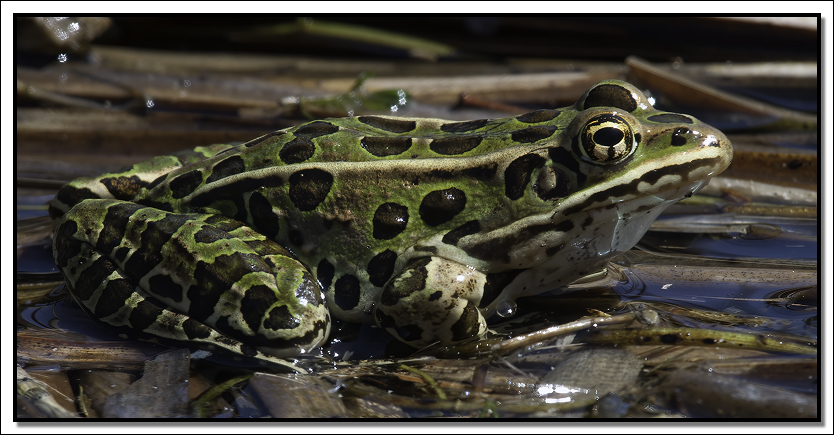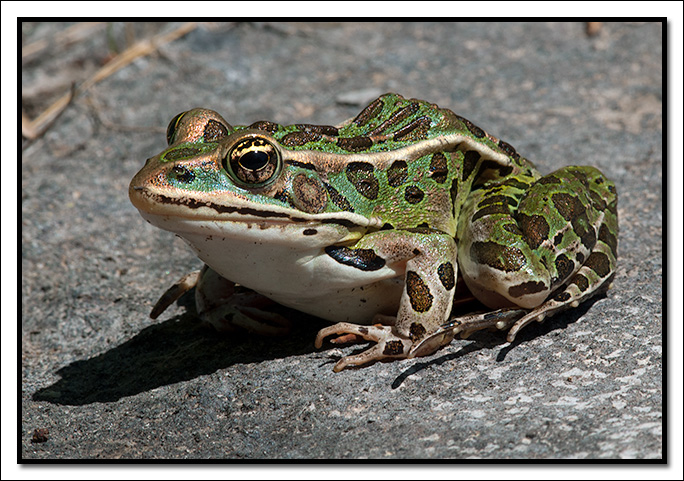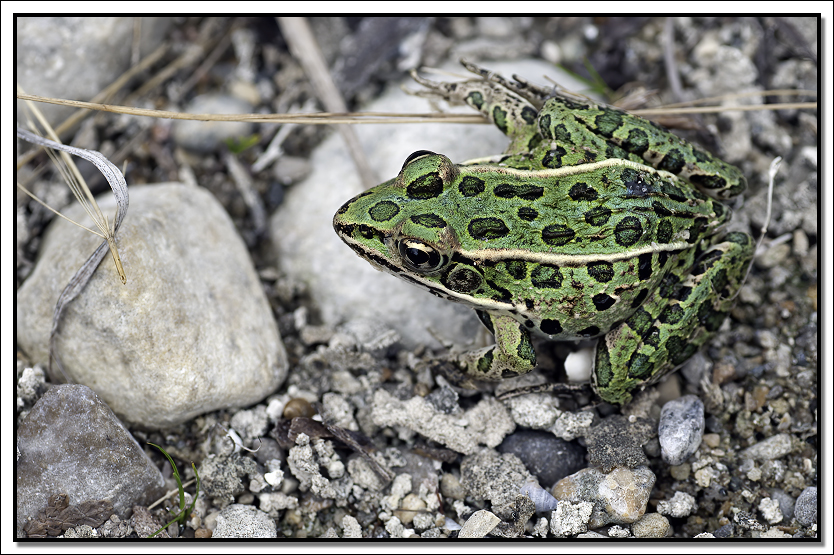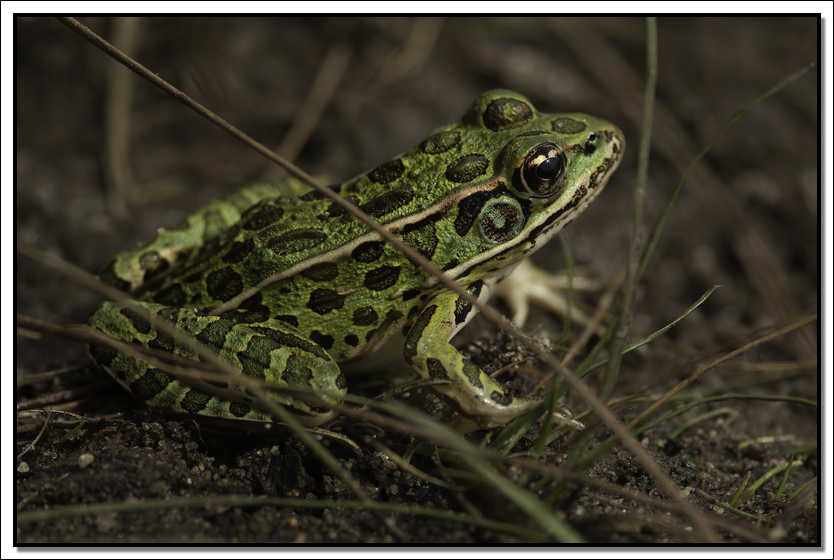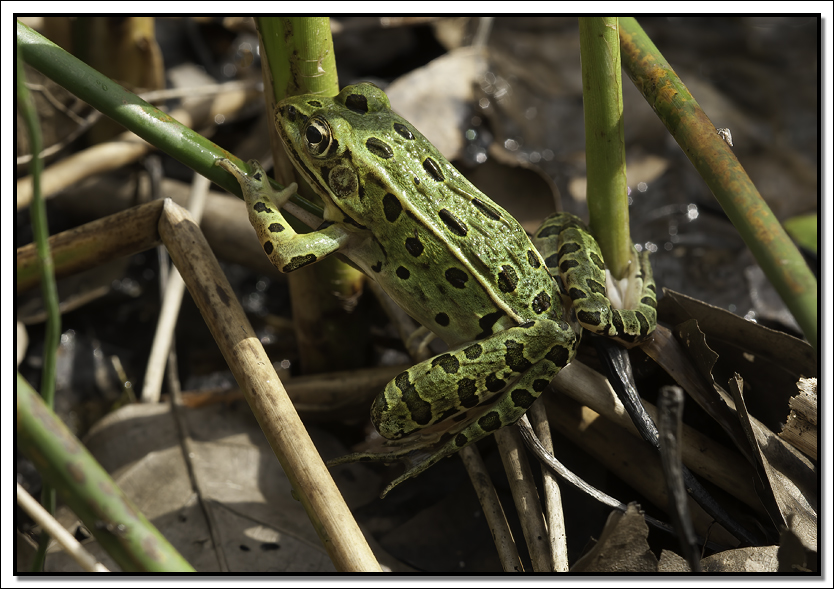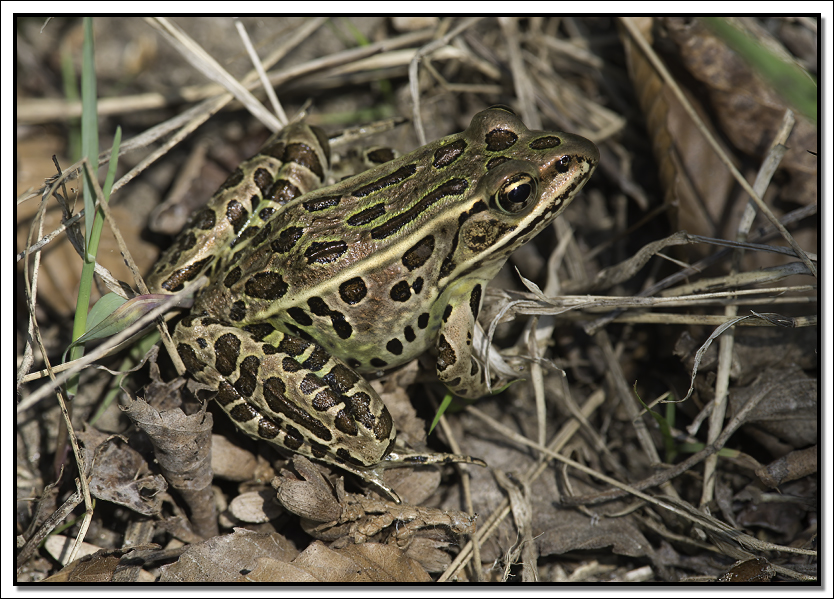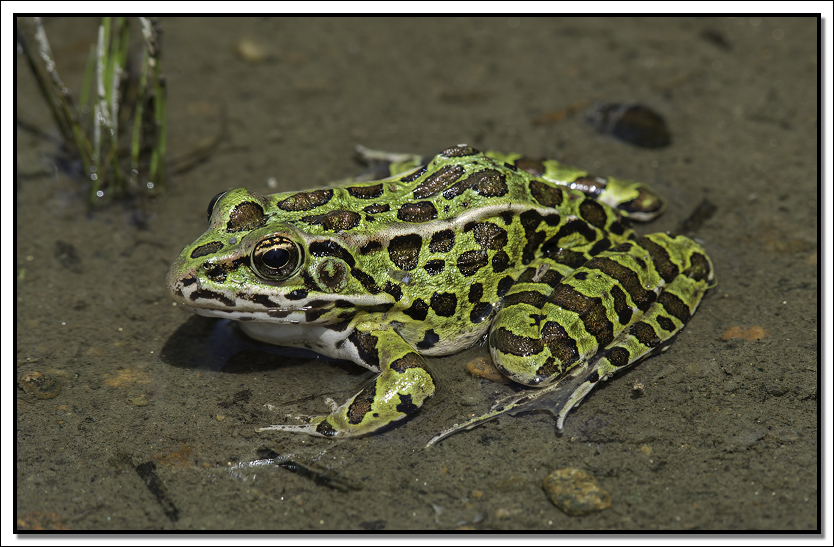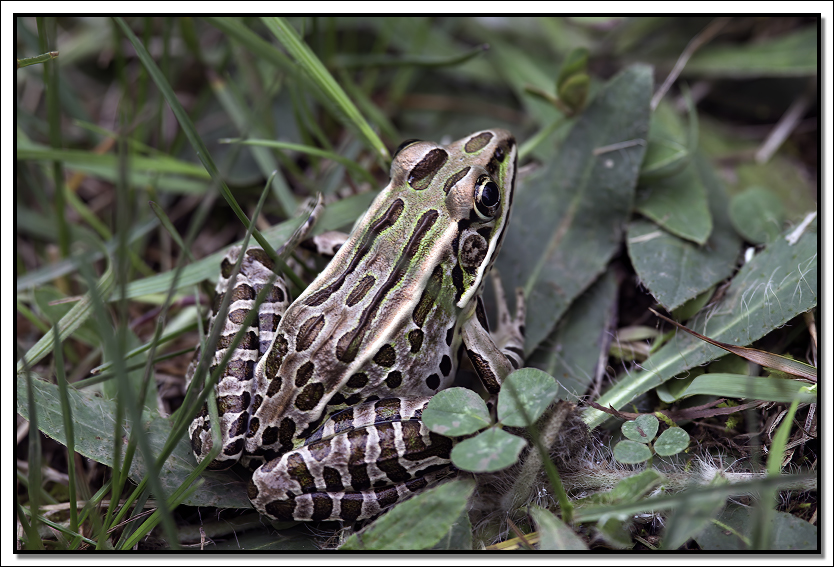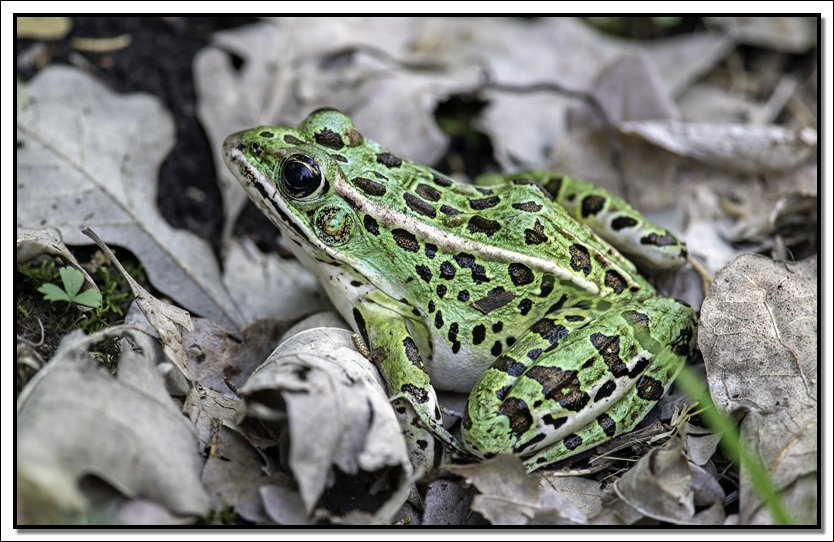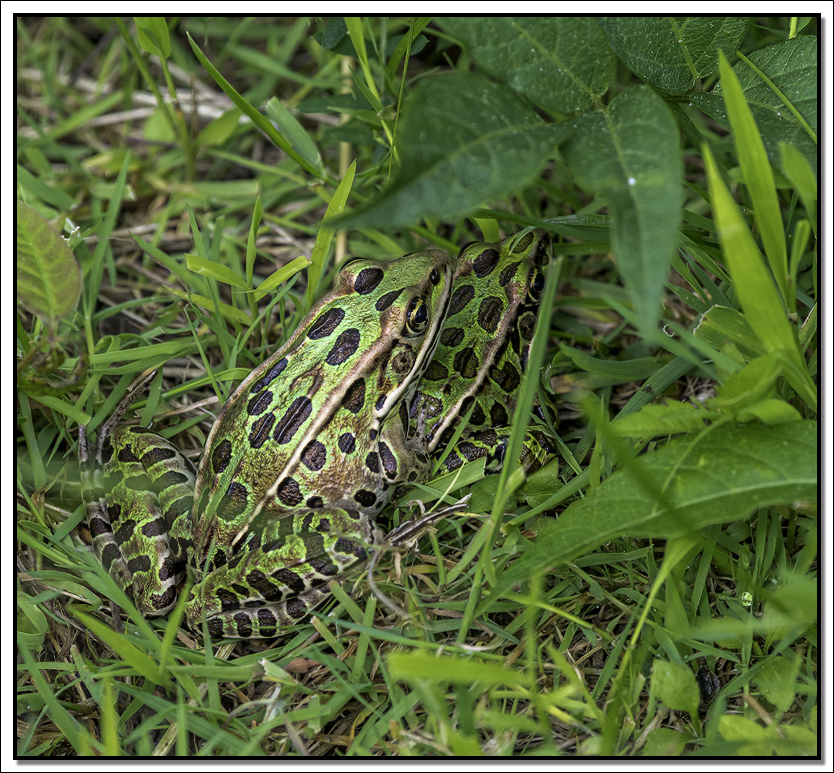Leopard Frog
Northern Leopard Frog (Lithobates pipiens )
Leopard Frogs appear to be seen more often then most frogs, because they are common both on land and in water. They are the most widespread frog species in North America.
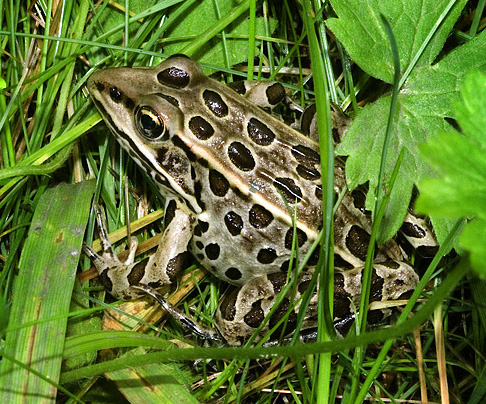 Leopard Frogs are very attractive with dark spots over a green or bronze background and, thus, blend in very well in the grass and the shadows of the meadow or algae of the water.
Leopard Frogs are very attractive with dark spots over a green or bronze background and, thus, blend in very well in the grass and the shadows of the meadow or algae of the water.
Leopard frogs are carnivores and will eat just about anything they can fit in their mouths. They eat beetles, crickets, ants, flies, worms, snails, smaller frogs, including their own species, and even small garter snakes.
Northern Leopard Frogs occupy a wide range of habitats like ponds, slow rivers, lakes, swamps and moist meadows. They are often found considerable distances from open water. These frogs hibernate on the bottom of water bodies that do not freeze solid where they absorb oxygen through their skins.
Northern Leopard Frogs breed in mid- to late spring in relatively permanent ponds. The female lay eggs, which are attached to submerged vegetation. The eggs are very tiny and hatch in one to three weeks, depending on the temperature. Tadpoles live off of algae and decaying vegetation. They transform in mid- to late summer and reach maturity in approximately two years.
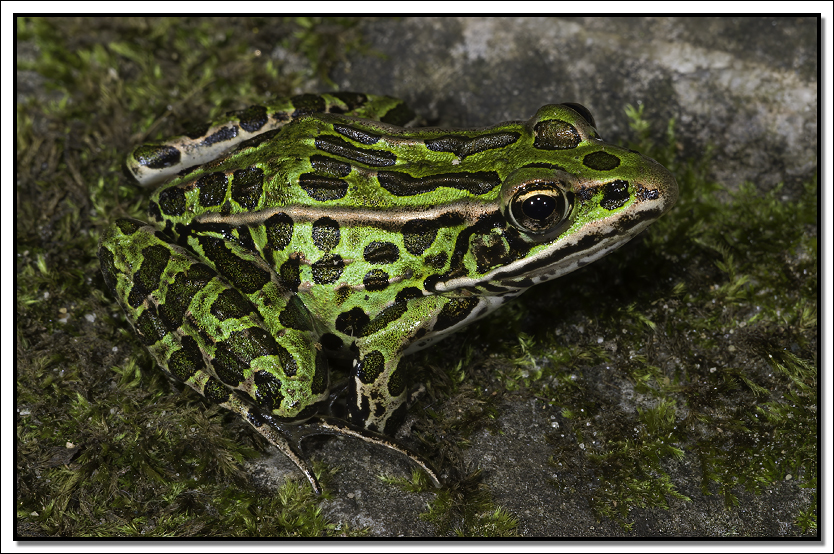
The main threats to Northern Leopard Frogs are habitat loss and degradation, as well as predation and road mortality. The predators for the tadpoles include dragonfly larvae, fish, aquatic insects and leeches. For the frogs, this list is long: raccoons, minks, weasels, otters, snakes, herons, kingfishers, bitterns, hawks, turtle, trout, bass and pike. Humans also have an impact from cruel kids, fisherman and companies supplying high school biology classes.
